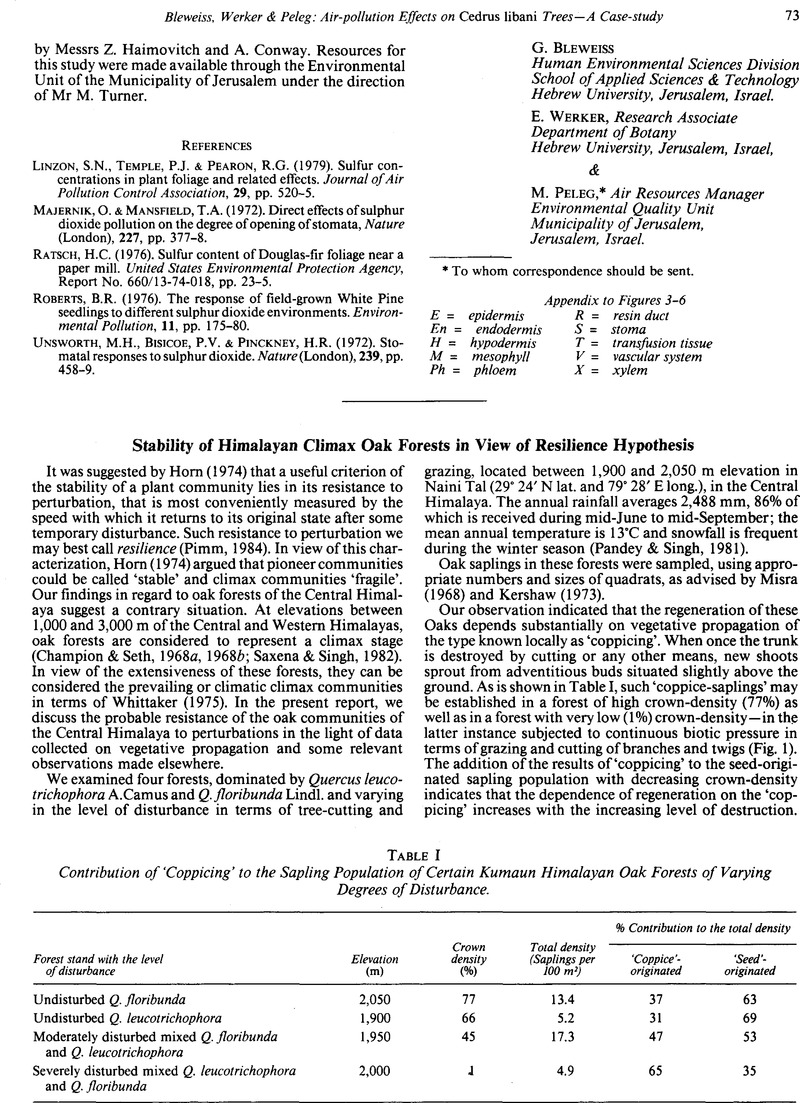Crossref Citations
This article has been cited by the following publications. This list is generated based on data provided by Crossref.
Singh, S P
and
Singh, J S
1986.
Structure and function of the Central Himalayan oak forests.
Proceedings / Indian Academy of Sciences,
Vol. 96,
Issue. 3,
p.
159.
Singh, S P
Tewari, J C
Yadav, S
and
Ralhan, P K
1986.
Population structure of tree species in forests as an indicator of regeneration and future stability.
Proceedings / Indian Academy of Sciences,
Vol. 96,
Issue. 6,
p.
443.
Singh, J. S.
and
Singh, S. P.
1987.
Forest vegetation of the Himalaya.
The Botanical Review,
Vol. 53,
Issue. 1,
p.
80.
Thadani, Rajesh
and
Ashton, P.M.S.
1995.
Regeneration of banj oak (Quercus leucotrichophora A. Camus) in the central Himalaya.
Forest Ecology and Management,
Vol. 78,
Issue. 1-3,
p.
217.
Negi, A.S.
Negi, G.C.S.
and
Singh, S.P.
1996.
Establishment and growth of Quercus floribunda seedlings after a mast year.
Journal of Vegetation Science,
Vol. 7,
Issue. 4,
p.
559.
Vetaas, Ole R.
2000.
The effect of environmental factors on the regeneration of Quercus semecarpifolia Sm. in Central Himalaya, Nepal.
Plant Ecology,
Vol. 146,
Issue. 2,
p.
137.
Rawal, Ranbeer S.
Gairola, Sanjay
and
Dhar, Uppeandra
2012.
Effects of disturbance intensities on vegetation patterns in oak forests of Kumaun, west Himalaya.
Journal of Mountain Science,
Vol. 9,
Issue. 2,
p.
157.
Krishna, Mayank
Gupta, Shruti
Delgado – Baquerizo, Manuel
Morriën, Elly
Garkoti, Satish Chandra
Chaturvedi, Rupesh
and
Ahmad, Shandar
2020.
Successional trajectory of bacterial communities in soil are shaped by plant-driven changes during secondary succession.
Scientific Reports,
Vol. 10,
Issue. 1,
Tyagi, Vidit
Singh, Surendra P.
Singh, Ripu Daman
Gumber, Surabhi
Thadani, Rajesh
and
Pandey, Rajiv
2023.
Influence of slope position and aspect on the vegetation attributes and tree-water relations in forests of the central Himalayas.
Journal of Mountain Science,
Vol. 20,
Issue. 9,
p.
2592.



